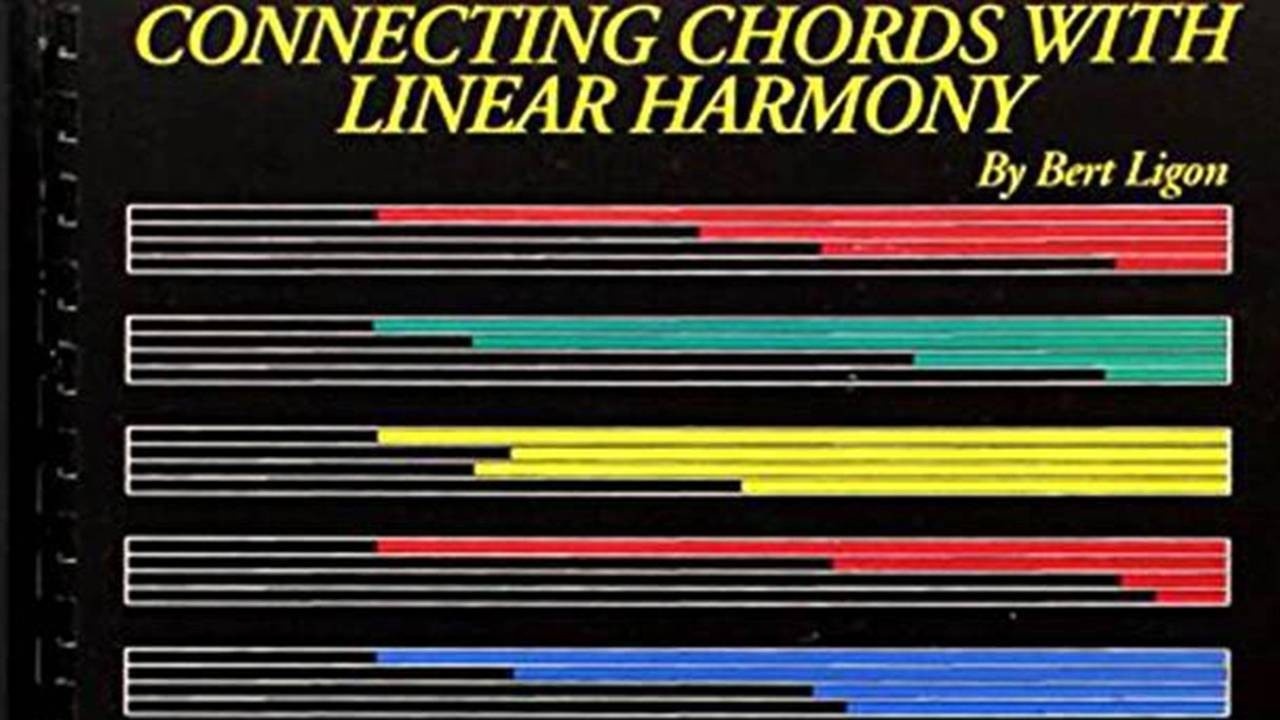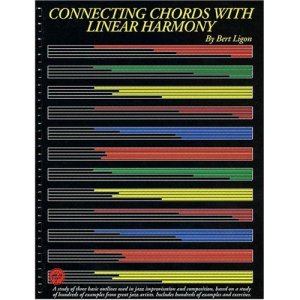
Connecting Chords With Linear Harmony
Nov 12, 2014(by Bert Ligon)
Bert Ligon's Connecting Chords with Linear Harmony is my favorite jazz improvisation technique book of all times. It explains and exemplifies jazz lines: their foundation, variations, development and common usage on jazz recordings. ALL students of mine that came across this book had (basically) the same opinion as me about this!

And here's why it's the best of its kind:
Ever had a big "?" while learning a lick or transcribing a solo? You know: it sounds good and makes sense, it's the "right" scale... but you just can't understand why the improviser choose these notes... (or how to emulate it)
Yeah. I can relate! Even simple licks sung by Chet Baker... I didn't always "get it" at first! Bert Ligon's book got rid of most of my personal "?" regarding improv. It showed me the absolute "basics" for all lines, some variations on them and then hundreds (yes, hundreds) of examples from my favorite jazz recordings.
Not 'just scales' ... or 'practice these exercise' ... SIMPLY the stuff that comes straight from jazz legends. Period.
Not a Method
It's not a method per se and I find it hard to categorize. We could call it a "jazz improvisation technique" book... and the "technique" part is straight-forward because the approach is based on only ONE fundamental concept.
Connecting Chords with Linear Harmony exemplifies the principles of obvious and necessary resolutions between chords. Jazz solos have to clearly outline the changes by drawing upon these resolutions. The most basic thirds and sevenths resolving:

Has That "Ring of Truth"
And the author demonstrates clearly that the resolutions happen naturally in the music from all time eras. Famous compositions and improvisations are mostly (if not all) based on three basic outlines (and their variations):

It makes a lot of sense as it is based in the major scale, our good old friend. No extraneous explanations and concepts "out of left-field". It really "rings true" to me. And, most of all...
It's Anchored in "Real Music"
The three basic outlines above get their full meaning only through examples from actual jazz repertoire and improvisation. Good news :
The book contains more than 250
jazz lines from famous recordings!
Click here for a few examples (with tabs)
- Cannonball Aderley
- Chet Baker
- Kenny Baron
- Randy Brecker
- Clifford Brown
- Tom Harrell
- Freddie Hubbard
- Charlie Parker
- Wes Montgomery
- Sonny Stitt
- ...and about 20 other jazz artists.
Click here for a few examples (with tabs)
As you can see, the Connecting Chords with Linear Harmony book is anchored in the tradition of jazz and its great improvisers. I believe that's why I'm so excited about it.
Most jazz improvisation books on the shelves merely show "concepts" and "ideas" but don't relate directly to the recorded history of jazz. Bert Ligon really hit something big there.
Way to go!
Get this book now!










